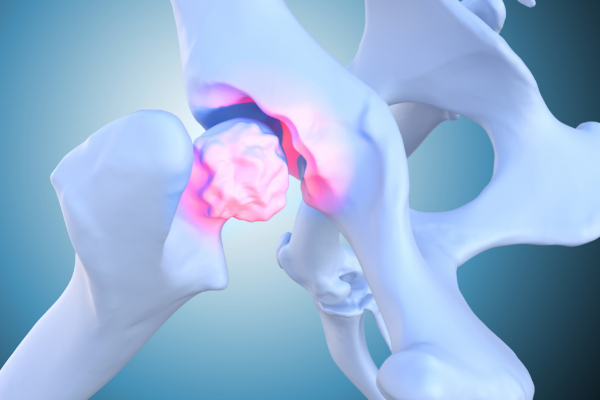Joint Reconstruction
Joint reconstruction surgery is a treatment option for patients with damaged joints caused by injury, arthritis, or structural abnormalities. Unlike joint replacement—where the joint surfaces are removed and replaced with artificial implants—joint reconstruction focuses on preserving and repairing the patient’s own joint wherever possible.
This page explains when joint reconstruction surgery is recommended, the conditions it can treat, the different techniques available, and what recovery involves.

What is Joint Reconstruction?
Joint reconstruction refers to surgical techniques that repair, realign, or stabilise a joint so that it functions properly again. It may involve:
- Repairing or reconstructing ligaments (e.g. ACL surgery in the knee)
- Restoring damaged cartilage or meniscus
- Osteotomy – realigning bones to shift weight away from damaged areas
- Arthroscopy – minimally invasive procedures to smooth or repair joint surfaces
The goal is to preserve natural joint tissue for as long as possible and delay the need for total joint replacement.
Conditions Treated with Joint Reconstruction
Joint reconstruction surgery may be recommended for:
- Sports injuries such as ligament or cartilage tears
- Meniscus tears in the knee
- Labral tears in the hip or shoulder
- Joint deformities or misalignment
- Early arthritis where preservation is still possible
Benefits of Joint Reconstruction Surgery
- Preserves the natural joint whenever possible
- Reduces pain and improves mobility
- Delays or avoids the need for total joint replacement
- Allows return to sport and active lifestyle
- Can be performed using minimally invasive techniques
Joint Reconstruction Procedures
Knee Reconstruction
- ACL reconstruction for ligament tears
- Meniscal repair for cartilage preservation
- Osteotomy to correct alignment and relieve pressure
Hip Reconstruction
- Labral repair for hip impingement or labral tears
- Hip arthroscopy to reshape bone and preserve cartilage
Shoulder and Other Joints
- Labral or rotator cuff repair in the shoulder
- Cartilage repair techniques in smaller joints
The Joint Replacement Procedure
Before
- Clinical examination and medical imaging (X-rays, MRI, or CT)
- Pre-operative physiotherapy may be recommended
- Discussion of treatment options and expected recovery
During
- Performed under a general or spinal anaesthetic
- Minimally invasive arthroscopic techniques used where possible
- Repair, realignment, or reconstruction carried out depending on the condition
After
- Same-day or short hospital stay in most cases
- Walking aids may be required initially for lower limb procedures
- Early physiotherapy is key to successful recovery
Recovery After Joint Reconstruction
Short-Term Recovery
- Swelling and discomfort controlled with medication and rest
- Gradual return to light activities in the first 2–6 weeks
Rehabilitation Timeline
- 0–6 weeks: Focus on regaining motion and stability
- 6–12 weeks: Strength and balance training
- 3–6 months: Gradual return to sport or heavy activity depending on the joint treated

Risks and Complications
As with any surgery, joint reconstruction carries some risks, including:
- Infection
- Blood clots
- Stiffness or reduced range of motion
- Re-injury or graft failure in ligament reconstructions
- Need for further surgery if arthritis progresses
Why Choose Mr Mark Webb for Joint Reconstruction
When you choose Mr Mark Webb for your joint reconstruction, you can expect:
-
Precise diagnosis using advanced imaging and specialist evaluation to define which parts of the joint are damaged (ligaments, cartilage, bone) and plan the most appropriate reconstructive approach
-
Use of the latest joint reconstruction techniques (e.g. cartilage repair, osteotomy, ligament or tendon repair, joint preserving surgery) to preserve as much of your natural joint and function as possible
-
A personalised treatment plan designed around your lifestyle goals, activity level, and the degree of joint damage you have
-
Access to skilled surgical execution by a consultant orthopaedic surgeon experienced in reconstructive procedures, which can reduce risk, improve recovery, and give you the best long-term outcomes
-
Structured rehabilitation tailored to your procedure to restore strength, stability, motion, and to help you return to activities more safely and effectively
Frequently Asked Questions
What does joint reconstruction mean and how is it different from joint replacement?
Joint reconstruction refers to procedures aimed at repairing or preserving parts of your existing joint—such as repairing ligaments or cartilage, reshaping bones, or stabilising joint structures—rather than replacing the joint entirely with an artificial implant. It’s used when some joint function can still be saved and when conditions allow.
Am I a candidate for joint reconstruction instead of replacement?
You may be a candidate if:
-
Your damage is moderate and not yet full-thickness or advanced arthritis
-
The joint instability or injury involves repairable structures (e.g. ligaments, cartilage)
-
You are relatively young or active and want to preserve natural joint tissue
-
Conservative measures (physio, injections, lifestyle changes) have been tried and haven’t given sufficient relief
-
Your general health and joint alignment are favourable for reconstructive surgery
What are the benefits of joint reconstruction?
Some of the advantages include preserving more of your natural joint structure; potentially less invasive surgery; better retention of joint biomechanics (motion, feeling more natural); possibly faster recovery and fewer complications associated with complete replacement; and delaying or avoiding the need for a full joint replacement.
What is the recovery timeline after joint reconstruction, and when can I return to normal or sports activity?
Recovery depends heavily on what was reconstructed (cartilage, bone, ligaments) and how extensive the procedure was. You might need protected weight bearing, use of braces or supports, and progressive physical therapy. Everyday activities may return sooner than after a full replacement, but more activity or sport could take several months depending on your condition and how carefully you follow rehab. (there is variation depending on joint and procedure)
What are the risks or limitations of joint reconstruction?
Possible risks include: incomplete healing of repaired tissue (cartilage or ligaments), persistent pain, risk of re-injury, progression of joint damage or arthritis despite reconstruction, procedures may not restore full normal function in severe cases. Also, sometimes reconstruction may delay but not eliminate the need for joint replacement later. Surgeon experience and patient compliance with rehab are important factors.

